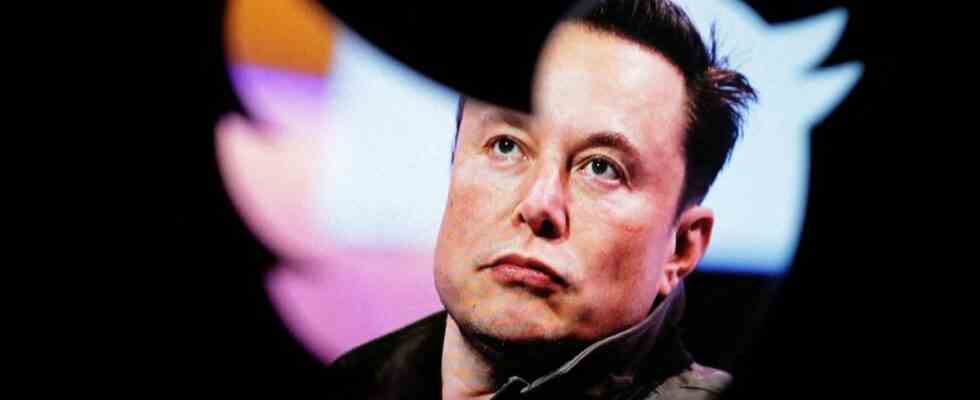You have to give Elon Musk one thing: Twitter still works. For months, former employees and developers have suspected that the platform could soon collapse. But the social network has even coped with a major event like the World Cup, which puts a particular strain on servers and technical infrastructure due to the large number of tweets.
Musk has really done a lot to ruin Twitter. Apart from all the substantive controversies – Musk courts right-wing extremists, advertisers cancel bookings, a new payment model only brings chaos – there were also severe cuts in the company structure. In the meantime, only about 2,300 of the 7,500 employees are said to be left. At least that’s what Musk says himselfpreviously had CNBC from 1200 remaining permanent employees reportedincluding just 550 full-time developers.
The platform is a complex network of databases, servers and code – on Twitter it is considered a particularly inscrutable thicket. Musk likens the platform to a Rube Goldberg machine, a useless but fun contraption that makes simple things extremely complicated. Allegedly the new boss is therefore thinking about itto kick the entire program code into the bin and start from scratch. This is supported by the fact that he fired a number of developers, some of whom have been since more than a decade worked for the company. However, those who understand how the system works also went with them.
That has consequences. Twitter will probably not collapse from one day to the next, but there is too many safety nets and false floors. The more likely scenario is that the platform will slowly but surely erode. Small errors pile up, tweets disappear, images don’t load. It could become particularly critical if unplanned things happen: hackers attack, servers go down. Twitter may soon have to revive the infamous “Fail Whale”. This illustration of a whale on the ocean floor appeared earlier when the website was down due to technical issues.
The first signs are already showing. Recently, the notifications were missing for some users: They didn’t get it anymorewhen someone replied to you or sent you a direct message. The bigger the account, the the system works less reliably. These failures also occur with several accounts of the SZ editorial team. And depending on whether you open Twitter in the mobile app or on desktop, your own timeline looks different.
Ramin Khatibi can explain why this is happening. As “Site Reliability Engineer” at Twitter until 2019, Khatibi was responsible for ensuring that the website and app worked reliably. He was stunned by Musk’s takeover of his former employer. He knows the weak points in the system and knows how to plug them.
Khatibi says: The fact that Twitter still works is only thanks to their years of work, they have built a strong technical foundation. However, he doubts that the site will remain stable in the long term. Musk not only wants to save radically, but at the same time radically transform Twitter – and is currently having new functions tried out every week that would previously have been tested for months.
“Rapidly rolling out features can break down internal systems when those features are designed without regard to resources or technical constraints,” says Khatibi. “In the case of Twitter, that’s particularly likely because a lot of the expertise has been lost, from the people who’ve already made those very mistakes.” They had paid their dues, but now they are no longer there.
Because Musk lacks respect for the achievements of the pre-Musk era: “Elon spins the story that Twitter’s engineers were useless. That’s how he wants to push through changes in the system.” The new owner replaced expertise with an authoritarian, hierarchical structure. “That lowers the incentives for engineers to provide feedback.” If they now try to warn against risky behavior, they would probably be ignored or excluded.
At some point the system will collapse
In addition, Musk focuses on the external effect, he wants to present new things in the so-called front end, i.e. the digital surface that users can see. Khatibi says: “The backend is neglected” – meaning everything under the hood. “Over time, this technological debt piles up until at some point a new feature comes along and causes the system to tip over because it’s not powerful enough.”
But the computer capacities are not being expanded, on the contrary. After the takeover ordered Muskto save $1 billion in infrastructure costs. And a few weeks ago, referring to the system, he tweeted: “It’s still working. Even after I disconnected one of the more sensitive server shelves.”
There are operating manuals in which Musk’s people can read how the technology is basically operated. But Khatibi says that it often doesn’t say what needs to be maintained when and how to react to problems: “These functions are dormant in the team itself,” so you need people who have accompanied the system for years. But many of them are no longer there. And Khatibi emphasizes the creative character of computer science: “In operating manuals it doesn’t say: ‘This is how you break the rules’https://www.sueddeutsche.de/wirtschaft/.” Expertise does mean: “First learn the rules, then learn, which you can break.”
It is possible to switch off a large proportion of the systems and keep Twitter functional, says Khatibi. Users could then continue to see and use the typical news flow. But that would only work in the long term if the monitoring and support systems were still working. “It’s like having sweat glands removed because you live in a warm environment. If something unforeseen then happens, the system can no longer adapt.” In short: Musk’s policies are slowly eroding the system, says Khatibi: “This sets the stage for system failure.”

